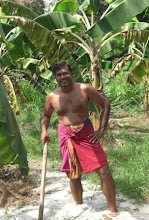Sri Lanka is a very interesting case study in the collection, interpretation and usage of data, and I am writing this in the hope that those who are preparing for the 2010 census will “kalpanakaranna” or think before they devise the questionnaires and train the census gatherers on their extremely important task.
I very strongly believe that people lie and misrepresent data on the census forms. If not, how can a country with very little real poverty, have half the population receiving Samurdhi (welfare) benefits? I know of families where there is a wage earner overseas but is getting these benefits, and living a pretty comfortable life from their remittances. I dare say the wage earner’s name will not be in the census either! And how does that overseas contributor to the SL economy get counted in the census!
The census while supposedly counting the number of people in the country also take random samples of data that form the backbone of important Government statistics that the Central Bank amongst others use for developing policy in the country. My contention therefore is that the policy is developed from flawed or inaccurate information that is gathered that augurs very poorly in the planning and implementation of projects. The powers in the country are constantly quoting this information in the media as to the why’s and wherefores of what they are trying to do. This then gives rise to wrong policies being carried out to the detriment of growth and prosperity in the country.
My particular interest is in what the real number of SL citizens overseas is? Which segment remit funds back to SL? What is the annual remittance? What are their skill levels and what can be done to improve them, if they can increase their income and hence the amount of remittance? In the rural sector, I would like to know the real number of people engaged in each sector, especially as many people are engaged in many sectors. I know young men where I live, who work on a Combine Harvester for 3 weeks a season, then find a painting or construction job in Colombo for a few weeks. Then are underemployed for a few more, and work their small agricultural plot, so that they can grow sufficient rice to feed their family for the season. These people therefore work in 4 or 5 sector categories as defined in the Central Bank statistics, but are most likely classified as farmers. Poverty alleviation in the form of the rice subsidy to help these non farmers is the wrong way to tackle their lack of regular income. They need guidance and direction in skills training to promote a vocation that can sustain them in the long term and provide for their families.
Subscribe to:
Post Comments (Atom)

No comments:
Post a Comment